
Learn what an f hole is on the violin, and how sound holes have evolved on other stringed instruments.
When you first saw a violin, did you wonder what those beautiful mirrored carvings were on the front? They may look like the shape of the letter “s” from far away, but if you look a little closer, you’ll notice a horizontal notch that turns them into the letter “f”.
The carvings on the top plate of a violin are called the “f-holes”, and they serve a very important purpose on the violin. They help air escape from inside the violin, which is very helpful for sound production.
Keep reading to learn more about this important, yet beautiful feature on our instruments. We’ll also discuss the sound holes on other instruments, and how different shapes can change the tone of the instrument.
What is an f-hole?
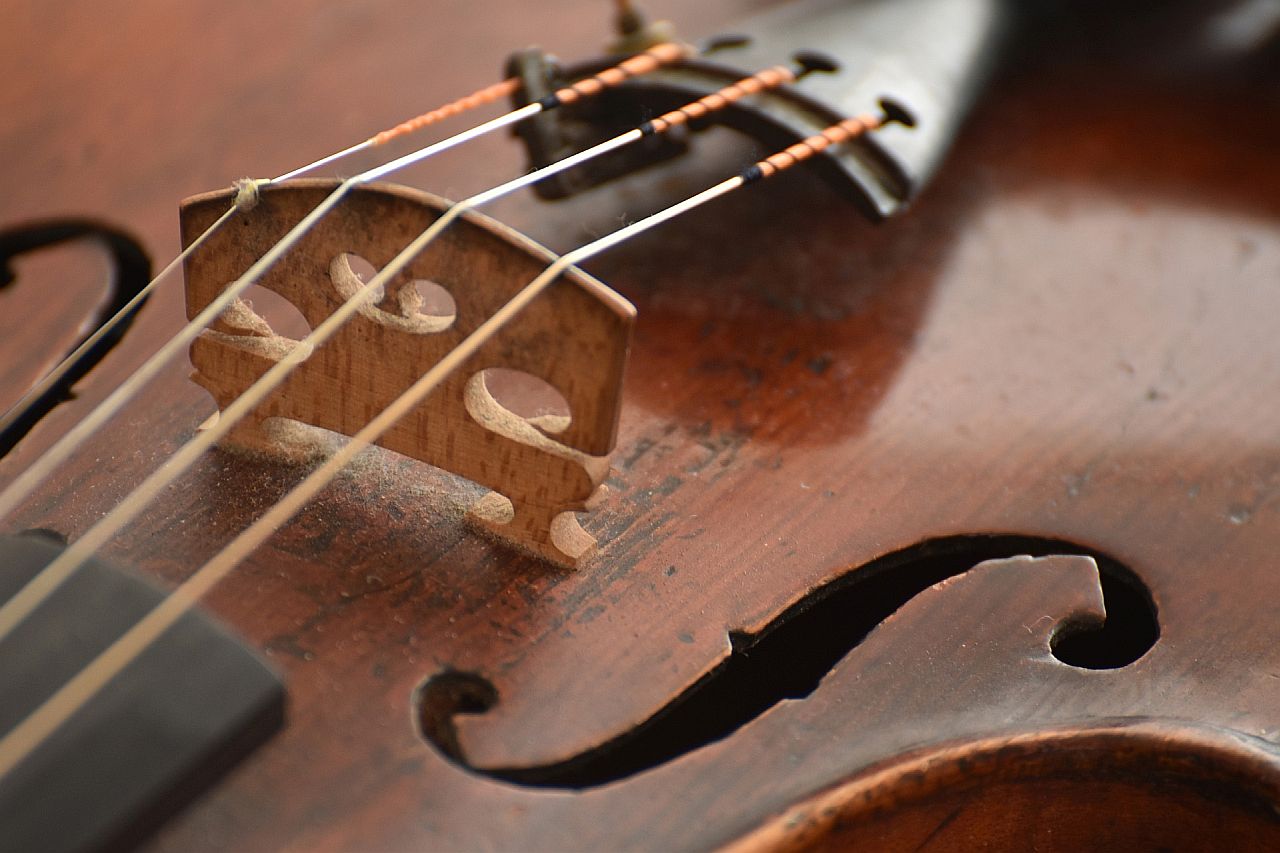
The f-holes on the violin are two long, curved openings located on the top plate of the violin surrounding the bridge. The f holes serve a few important purposes: they allow sound to escape, create vibrations, and help give the violin its tone.
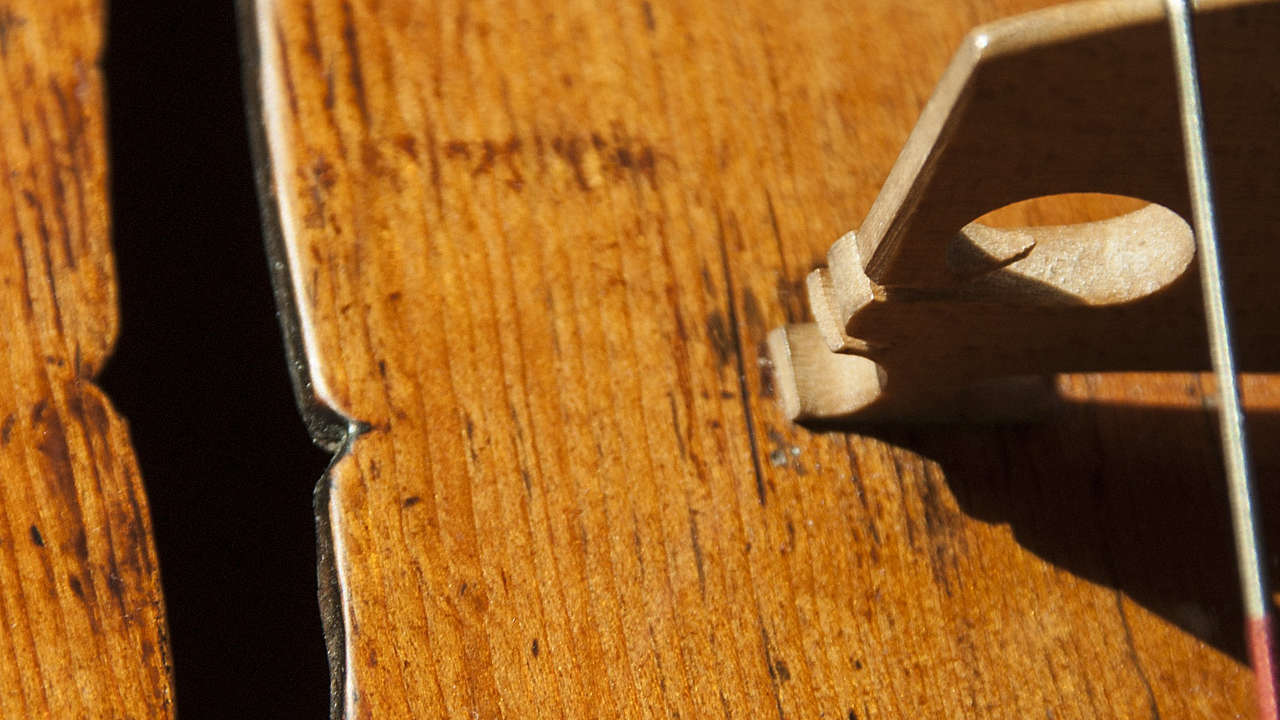
The notch in the middle of each f shape also shows where the bridge should be placed on the instrument. It’s very important to place the bridge in the optimal, perfect location. The bridge is under enormous pressure from the tension of all four strings, and we need to be sure there’s enough room between it and the fingerboard for the bow to play across the strings.
Why is it called an f-hole?
Since the holes are shaped like the letter “f”, we call it, simply, the “f-hole.” Up to the 1700s or a little later, they might’ve been called “s holes” since the “s” shape and also other shapes of the holes were in use.
Violin makers may have originally used an “s” shape, but then added a small notch to indicate the position of the bridge. This made it look more like our “f” today, but since written s’s used to look like f’s, they might’ve just been known as “s holes” for a while.
What does an f-hole do?
The f-holes allow sound to escape from the violin. When the strings are played, they vibrate the top and back of the violin, which creates sound waves. The f-holes allow the vibrating air to escape from the instrument, which amplifies the sound and gives the violin its characteristic tone.
In addition to their role in producing sound, the f-holes also have an aesthetic function. They are an important part of the violin’s visual design and are a mark of a violin maker’s style.
The f-holes can also help to regulate the temperature and humidity inside the violin. By allowing some air to circulate inside the instrument, the f-holes can help to prevent the wood from cracking or warping due to changes in temperature or humidity.
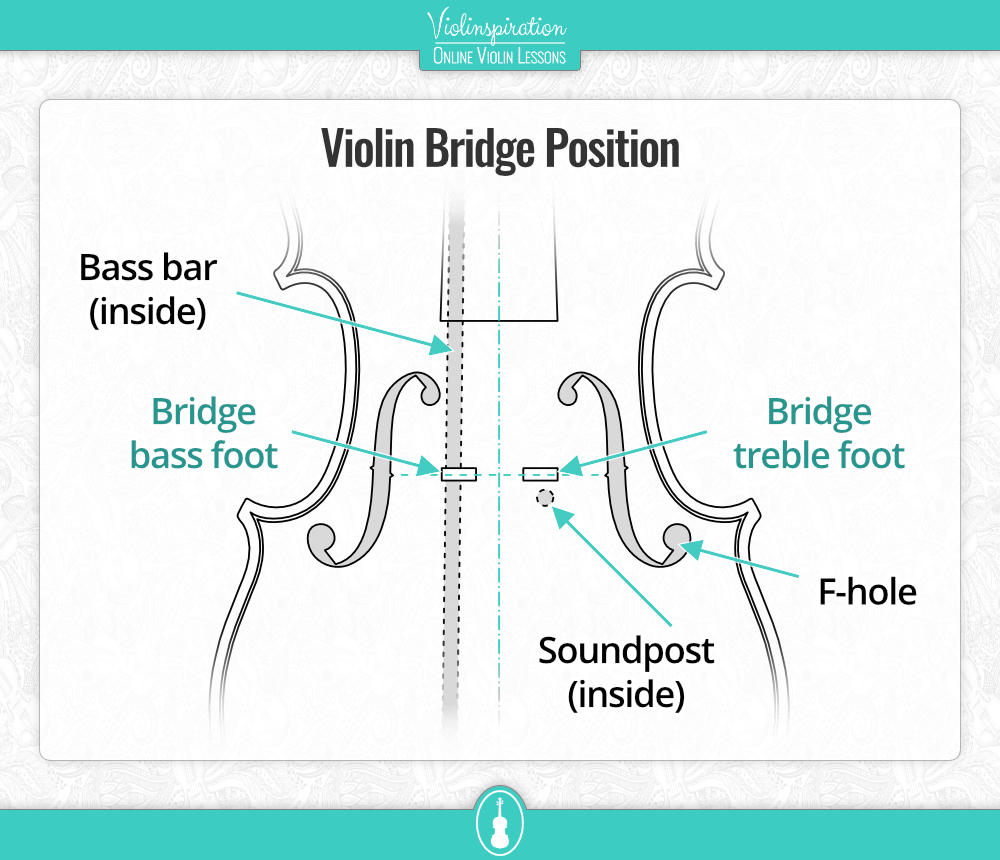
Finally, the inside horizontal notch of the f-holes shows where to place the bridge on top of the violin. The feet of the bridge should line up with the inside notch. Each f hole should line up with the C bout on each side of the violin.
The History of Sound Holes
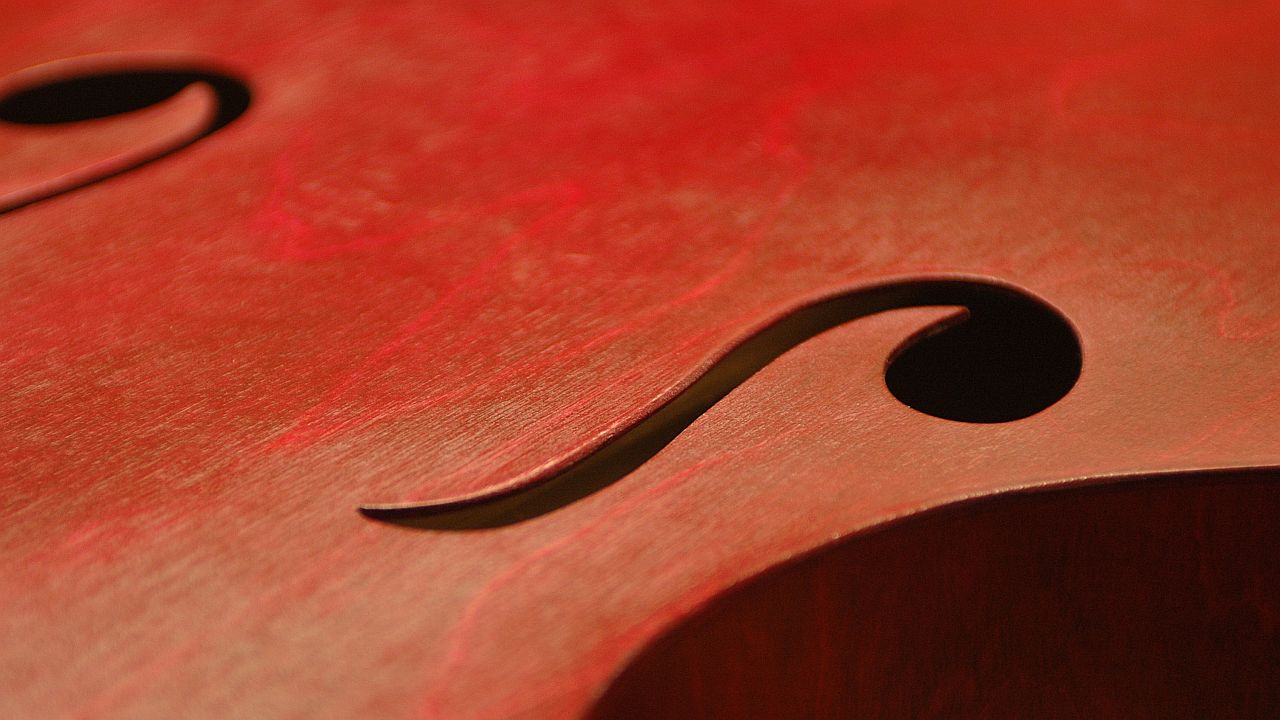
Older violins and gamba-family instruments had more intricate sound holes and carvings, like c-holes, half-moon shapes, or even just a round sound hole with intricate carvings inside it.
No matter what shape of the sound hole an instrument has, its purpose is to amplify the sound of the instrument. Many of the more intricate sound holes from the 1500s and earlier were there to both create more sound, and to look visually interesting.
Instrument makers experimented with different shaped cutouts until one shape stuck: the letter “f”.
Who invented f-holes?
The earliest violin f-holes were found on instruments made by violin makers Andrea Amati Gasparo de Salo, and Pietro Zanetto in the mid-1500s. Some of the early f-holes were shorter and wider, but the shape became more standardized in the 1700s when the violin’s development as we know it was almost complete.
It’s been studied that on the violin, the long, narrow “f” shape creates the optimal tone. This is why makers have stuck with this shape, and why it’s become so uniform.
Sound holes on other instruments
String instruments outside the violin family also have sound holes, but they’re not always f-shaped.
Gamba Instruments
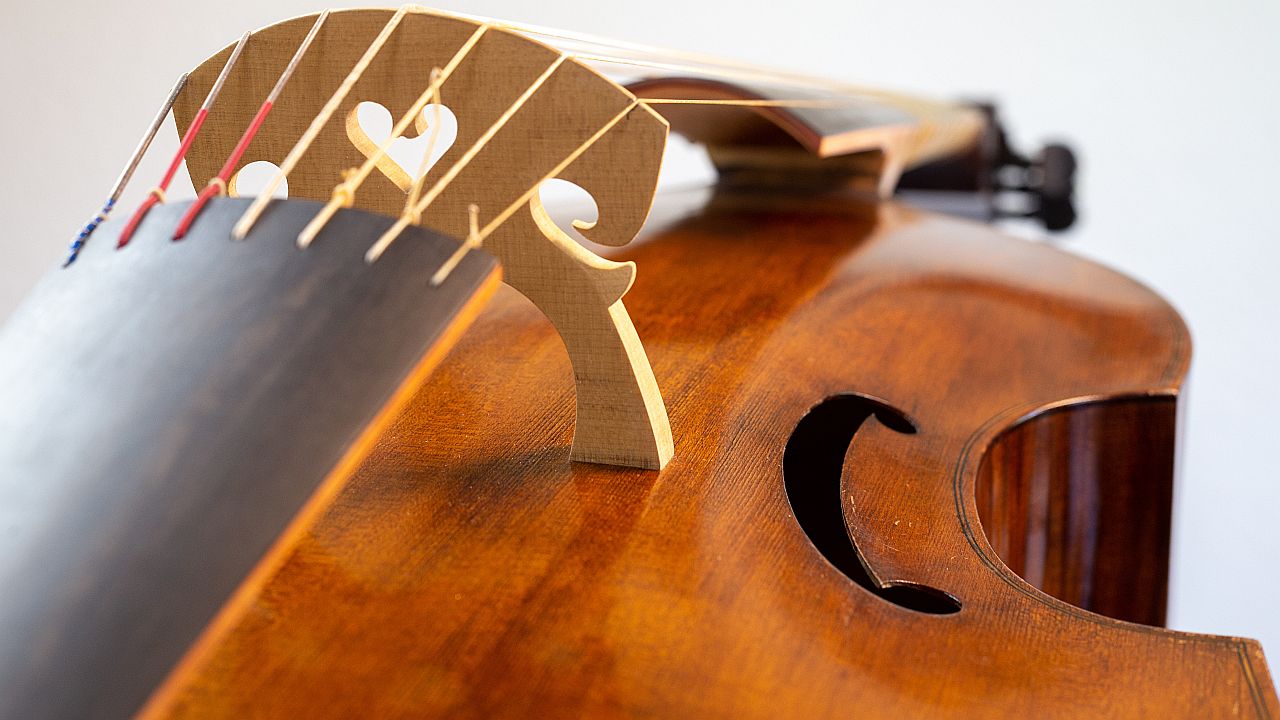
Gamba instruments traditionally had C-holes. They complement the c-bouts nicely and were sometimes carved ornately. They add a beautiful visual element to the body of the instrument, and of course, help to amplify the sound.
Guitars

Many guitars, especially standard acoustic guitars, have a single round sound hole between the bridge and the end of the fingerboard. This has been the traditional sound hole on guitars for a very long time. It wasn’t until the 1920s that we started to see f-hole guitars.
Gibson, a very popular guitar brand, makes electric guitars with f-holes. These f-holes are located a little lower than they are on the violin. A guitar’s f-holes are placed below the C bout, with the f-shape taking up the lower bouts.
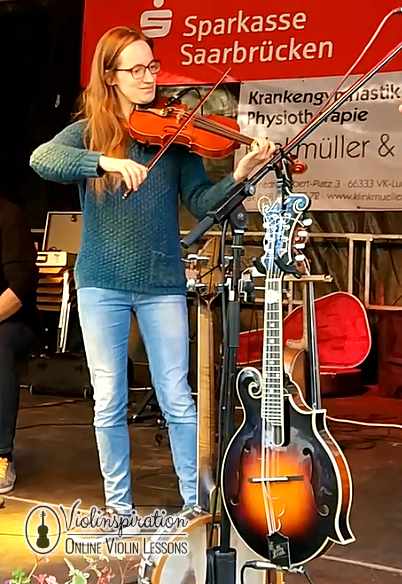
Yet another shape variation is seen on Fender telecaster guitars: there’s just a single f-hole on their electric guitars, on the bass side. This f hole is also located on just the lower bout, below the C bout.
Jazz and blues players tend to choose f-hole guitars, while classical and rock musicians favor round sound holes on their guitars. F-holes provide a clearer, more distinguished but mellow sound, that projects forward to the audience. Round sound holes tend to provide more overtones and bass power, and the guitarist can hear what they’re playing just a little easier because the sound doesn’t project quite as far out.
Byzantine Lyras
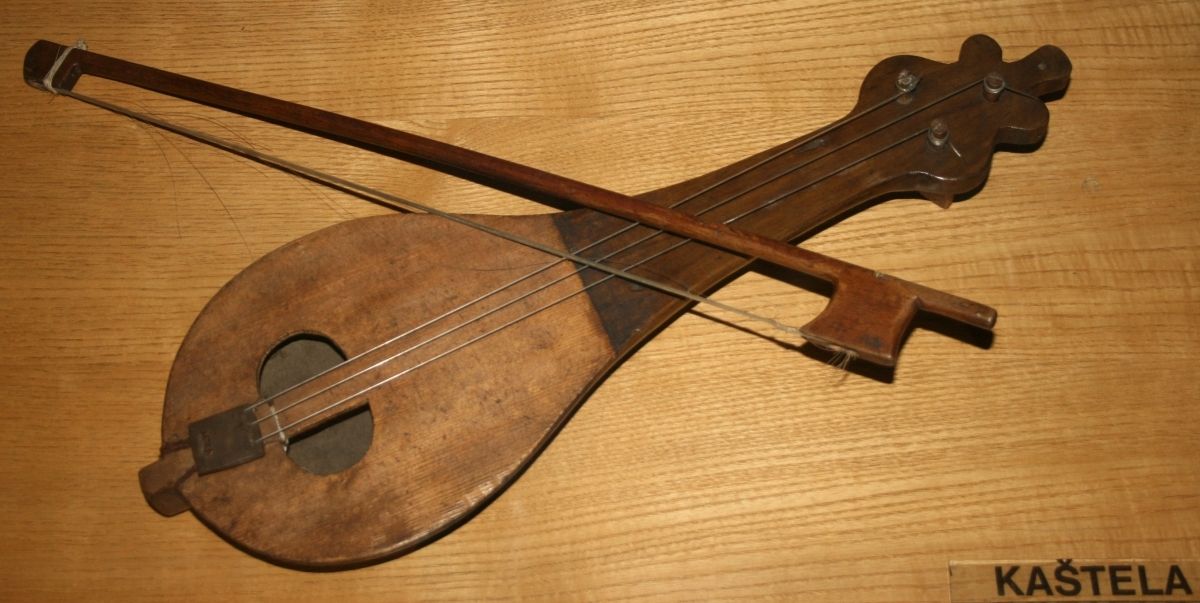
The lyra was a bowed string instrument from the Medieval era, circa the 9th century. The instrument was pear-shaped, and instead of a round sound hole or f-holes, it had two D holes.
A strip of wood remains under the strings, with the D holes mirrored out around it. It almost looks like a round hole, but with a strip of wood in the center.
Conclusion
The f-hole is a beautiful signature of an individual violin or stringed instruments maker’s work, but also one of the reasons why the violin sounds exactly the way it does today. While other instruments like the guitar have holes with different shapes, the long, narrow aspect of the f-hole creates the perfect tone for the violin.
If you’re interested in learning a bit more about what the violin od made of and its anatomy, make sure to check out my post “What is a Violin Made Of?“























